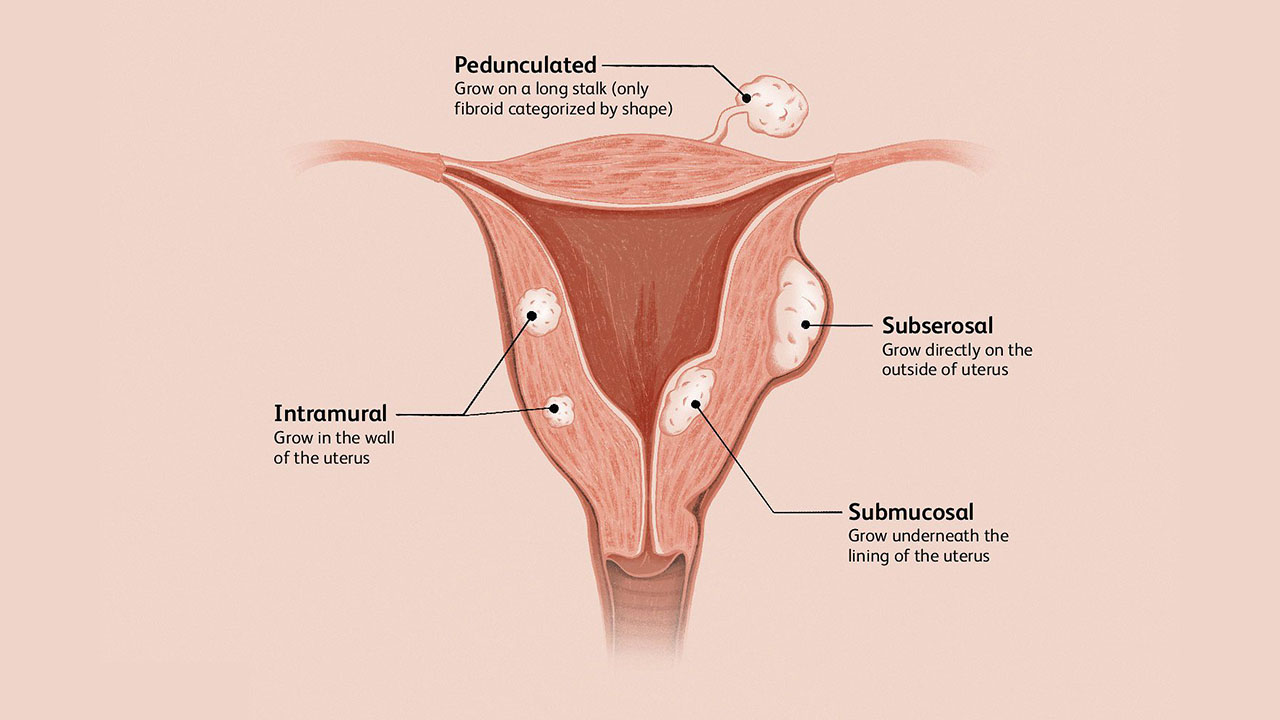Subserosal fibroids are a type of benign tumor that develops on the outer wall of the uterus, just beneath the serosa, which is the outermost layer of the uterus. Unlike other types of fibroids, such as intramural or submucosal fibroids, subserosal fibroids grow outward from the uterus, often advancing into the pelvic cavity.
Causes and Risk Factors
Subserosal fibroids are idiopathic, signifying that their specific cause remains unknown. However, several factors contribute to their development, such as:
Hormonal Influence
Hormones like estrogen and progesterone regulate the menstrual cycle and can promote fibroids’ growth. These hormones activate during a woman’s reproductive years, promoting fibroid growth. After menopause, fibroids often decrease in size due to a drop in hormone levels.
Genetic Factors
A genetic predisposition significantly increases the risk of developing fibroids. Women with a family history of fibroids are more likely to create subserosal fibroids.
Age and Ethnic Background
Women aged 30 to 50 are at a higher risk of developing fibroids. Research implies that African and American women may develop fibroids at a younger age as compared to other groups.
Lifestyle
Factors such as a sedentary lifestyle, high cholesterol levels, and obesity are associated with an increased risk of developing fibroids.
Symptoms
Subserosal fibroids may appear to be asymptomatic in some women, while others may experience common uterine symptoms that include:
- Pelvic pressure and pain
- Bloating
- Constipation
- Irregular and heavy menstrual bleeding
- Frequent urination
- Back pain
Diagnosis of Subserosal Fibroids
Several imaging tests, such as MRI, CT scan, or ultrasound, can diagnose subserosal fibroids. These techniques can thoroughly indicate fibroids’ location, nature, and size.
Treatment options
Medications
The common medications prescribed to manage the symptoms of fibroids are birth-control medications, gonadotropin hormone agonists, and some non-hormonal medications.
Uterine Fibroid Embolization
UFE, or uterine fibroid embolization, is a minimally invasive procedure widely used to manage fibroids.
Surgery
Myomectomy and hysterectomy are the major surgical options available to treat fibroids. Opting for this surgical option may require considering various life choices made by the patients.
Subserosal fibroids are non-cancerous and often asymptomatic, but they pose the potential to impact a woman’s quality of life. Understanding the symptoms, risk factors, and treatment options is essential for better management.




